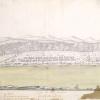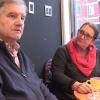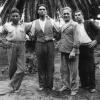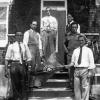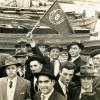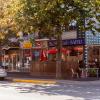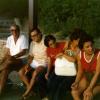The long history of Indigenous peoples in the area of Montréal—known as Tiohtià:ke in Kanien'kéha (Mohawk) and Mooniyang in Anishinaabemowin—began some 5,000 years and is still unfolding today.
José-Louis Jacome takes us on a tour of Little Italy and Villeray, the neighbourhoods in which, as an immigrant child, he first experienced Montréal.
José-Louis Jacome’s account of finding his roots tells more than a personal story: it bears witness to the beginnings of Azorean immigration to Montréal.
José-Louis Jacome, a Montrealer from the Azores, was researching his family history when a decisive encounter gave his project in a whole new dimension.
The first Azorean immigrants arrived in Montréal in 1953 and 1954. Their first-hand accounts tell about their reasons for leaving the islands, the voyage they undertook, and the problems they encountered upon arrival.
The first Azoreans immigrants came to Montréal in the 1950s. Their stories of their early years describe their first work experiences and the family and administrative challenges they faced, but also the birth of a community.
What was it like for a young newcomer to Québec to go through the ups and downs of adolescence while navigating between Azorean traditions and the Quiet Revolution? José-Louis Jacome talks about his adaptation to his new life in Montréal.
A Montrealer born in the Azores in the 1950s set out to trace his roots. The book that resulted tells the story of the first waves of Azorean immigration to Montréal.
In 2009, the Association du Petit Maghreb signed an agreement with the borough mayor allowing it to officially create the first Maghrebi neighbourhood in North America.
When the first Egyptian immigrants arrived in Montréal in the 1950s, most were members of minority communities in Egypt. In the decades since, Egyptian immigration has become more diverse.
